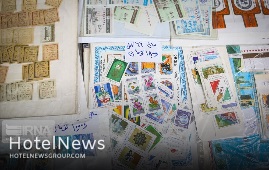
Various collections of the Iranian postage stamps issued since the Qajar era (1789–1925) onwards have been put on show at a newly-established museum in the historical city of Tabriz, the capital of East Azarbaijan province. Setting up inside the 200-year-old mansion (locally named “Khaneh Mojtahediha”), the museum was officially inaugurated on Saturday during a ceremony attended by Ramezanali Sobhanifar, the managing director of the National Post Company, and several local officials, IRNA reported. Furthermore, the museum turns the spotlight on the progress of communication and information technology tools in the country, showcasing numerous items from horse-drawn carts, scales, post boxes, as well as antique telephones and radios. Iran is one of the world’s pioneers in rendering postal services which dates from about 2,500 years ago. The modern post was launched more than one-hundred and fifty years ago by Amir Kabir, who was chief minister to Naser al-Din Shah Qajar. The historical city of Tabriz became the capital of the Mongol Il-Khan Mahmud Gazan (1295–1304) and his successor. Timur (Tamerlane), a Turkic conqueror, took it in 1392. Some decades later the Kara Koyunlu Turkmen made it their capital, it was when the famous Blue Mosque was built in Tabriz. The city retained its administrative status under the Safavid dynasty until 1548 when Shah Tahmasp I relocated his capital westward to Qazvin. During the next two centuries, Tabriz changed hands several times between Persia and Ottoman Empire. During World War I, the city was temporarily occupied by Turkish and then Soviet troops.
Create: May 24, 2021 Edit: May 24, 2021
Iran is weighing plans to open its borders to vaccinated tourists though it isn’t yet clear exactly when tourists will be allowed to arrive. The Ministry of Cultural Heritage, Tourism, and Handicrafts have already started extensive consultations with other government ministries for the reopening of borders to vaccinated travelers, the deputy minister Vali Teymouri said on Wednesday. “One of the issues that we are pursuing strongly through various committees is the arrival of international citizens who have been vaccinated so that won’t pose a threat or concern to the Iranian society,” the official said. “We have put forward the proposal to the Ministry of Foreign Affairs, the Ministry of Health, and to the President (Hassan Rouhani) as well.” He went on to say that other countries are planning to open borders to vaccinated tourists. “We estimate that soon, various tourist destinations in the world, including the European Union, will open their doors to international tourists implementing a vaccine-passport approach….” Earlier in March, the Head of the Iranian Tour Operators Association Ebrahim Pourfaraj asked the government to issue tourist visas for the international applicants who have been fully vaccinated against COVID-19. “The Ministry of Health and the National Headquarters for Coronavirus Control can at least agree that the international tourists who have received the [second dose of] coronavirus vaccine would be allowed to enter Iran,” Pourfaraj said. He also lamented that the continuation of such a trend would result in losing international tourist markets more than before. “Or at least they should make it clear so that we can respond appropriately to foreign companies and tourists to not to miss the international tourist markets more than before,” he said. According to available data compiled by the tourism ministry, the number of foreign visitors to Iran plunged 94% in the first nine months of the past Iranian calendar year (ended March 20, 2021) as the coronavirus pandemic takes a heavy toll on the tourism industry. “Some 450,000 foreign travelers arrived in Iran for mainly medical or trade purposes during the first nine months of the year… tightened measures to tackle the new coronavirus has reduced international travel to the country by 94 percent,” Teymouri said. The coronavirus epidemic has ruined more than 1.5 million jobs in Iran’s travel sector, tourism minister Ali-Asghar Mounesan said in December. “Over 1.5 million jobs have been lost in the tourism sector of Iran due to the COVID-19 disease…. Many of the tourism-insiders are now unemployed or they are staying at home,” Mounesan said. Smart and responsible traveling should replace “do not travel” recommendations, the minister stressed, adding: “In our country, Corona has caused problems in the tourism industry and the worrying point is the continuation of this trend.” Tourism [industry of Iran] was growing before the corona [outbreak], its revenues reached $11.7 billion in 2019, which accounted for 2.8% of GDP, near the average share of tourism in the world GDP, which was 3.2 percent, the minister explained. The ancient land embraces hundreds of historical sites such as bazaars, museums, mosques, bridges, bathhouses, madrasas, mausoleums, churches, towers, and mansions, of which 24 being inscribed on the UNESCO World Heritage list. Under the 2025 Tourism Vision Plan, the country aims to increase the number of tourist arrivals from 4.8 million in 2014 to 20 million in 2025.
Create: May 24, 2021 Edit: May 24, 2021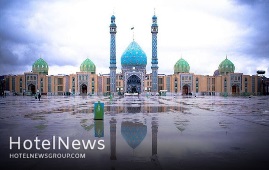
Some 2.2 trillion rials ($52.3 million at the official exchange rate of 42,000 rials per dollar) have been allocated to support tourism-related projects across Qom province. Of the figure, approximately 105 billion rials ($2.5 million) have been loaned to six tourism-related projects so far, provincial tourism chief Alireza Arjmandi said on Wednesday. It would be impossible to complete such major projects without bank financing, he explained. The country’s second-holiest city after Mashhad, Qom is home to both the magnificent shrine of Hazrat-e Masumeh (SA) and the major religious madrasas (schools). Apart from sightseers and pilgrims who visit Qom to pay homage at the holy shrine, the city is also a top destination for Shiite scholars and students who come from across the world to learn Islamic studies at its madrasas and browse through eminent religious bookshops. The city’s antiquity goes back to the Sassanid era (224 CE–651) and several historical mosques, mansions, and natural sceneries have been scattered across the city as well as towns and villages nearby.
Create: May 20, 2021 Edit: May 20, 2021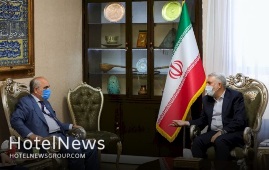
Iran’s Minister of Cultural Heritage, Tourism and Handicrafts Ali Asghar Mounesan said in a meeting with the Russian Ambassador to Tehran Levan Jagarian here on Tuesday evening that deepening the bilateral relations is possible through collaboration between the two nations. Tehran favors further improvement of comprehensive bilateral relations with Russia, but this is possible through upgrading the two nations’ ties, said Mounesan. Referring to his first visit to Russia, the Iranian official said the signing of the Shared Action Program and lifting the visa requirement for tourist groups of both countries are among the most important steps taken in that respect. Ambassador Jagarian, too, in the meeting referred to the ongoing visit of a group of Russian tourism industry activists in Iran and noted that the group in its visit identified Iran’s tourism potentials and is scheduled to depart for Russia tomorrow (on Wednesday). The Russian tourists are very eager to visit unexplored and adventurist destinations, and Iran with its historical background, natural attractions and unique potentials in ecotourism is an appropriate destination for them,” he said, referring to the Russians’ enthusiasm for visiting Iran.
Create: May 19, 2021 Edit: May 19, 2021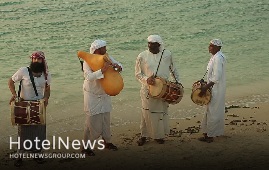
Head of Tourism Development and Cultural Heritage office of Kish Free Zone has said that the Persian Gulf island will become an international tourist destination for Fisher's New Year or as it called in the local language Nowruz-e Sayyad day. Nowruze Sayyad Day or Fisher's New Year is being celebrated annually on July 19. Locals, especially fishermen in southern regions of Iran, celebrate Nowruz-e Sayyad day, meaning the Fisher's New Year. Fishing is a major part of the island’s life and different seasons and periods are defined according to its cycles. Unlike other parts of Iran which celebrate the costumery Nowruz in late March, local people in southern Islands celebrate their New Year as well which called the Fisherman’s Nowruz, (Norwuz-e Sayyad) at the beginning of the main fishing season in late July. In this ceremony, the villagers wear new clothes and paint their animals with a red mud called Gelak and take them to the sea, and the indigenous women receive guests with cooked pastries made from dates called Ranginak. The locals would not go fishing or eat fish or other seafood on this day and believe that all fish are free and should reproduce. Head of Tourism Development and Cultural Heritage office of Kish Free Zone Mahan Modavvan told IRNA on Saturday that his organization, according to its goal and duties, is seeking to hold Nowruz-e Sayyad Day or Fisher's New Year celebrations in the summer festivals that are being held annually in this region. He said that various festivals such as fishing, seafood, water-based activities, and handicrafts exhibitions are scheduled in this celebration too. Although Kish Island is active in different sections of trade as well as oil and gas - it was even the greatest trading hub in the Persian Gulf during the Seljuk empire (1037-1194 AD) - its economy today is based mostly on tourism. The Island has the required infrastructure so that it has been called "the most complete international tourist region in Iran". Hosting about 1.5 million tourists every year, Kish Island has an average of 20,000 internal and international flights annually. It has 52 hotels (12 5-star ones), 2 apartment hotels and 2 resorts. However, the coronavirus outbreak hit the Island's tourism industry this year, so that it is now using its minimum capacity after two months of total lockdown.
Create: May 16, 2021 Edit: May 16, 2021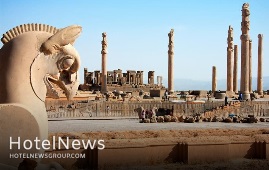
A host of experts will be discussing archaeological findings and the latest attempts for the conservation of the UNESCO-registered Persepolis for future generations. “In this webinar, experts and researchers in the fields of archaeology, conservation and restoration, archeology, linguistics, documentation, architecture and civil engineering, geology, biology, law, statistics, etc. will discuss and exchange views on the ancient Persepolis during a four-day international webinar, which starts on Sunday,” CHTN quoted the organizers as saying on Saturday. Archaeological achievements in the World Heritage site will be discussed on the first day of the conference while decades of conservation, restoration, documentation projects would be topics for the second day. On the third day, applied research on conservation and restoration, documentation will be scrutinized. Moreover, comprehensive conservation plans for the architecture and conservation of the site are set to be conferred on the last day of the event. Persepolis, also known as Takht-e Jamshid, whose magnificent ruins rest at the foot of Kuh-e Rahmat (Mountain of Mercy) is situated 60 kilometers northeast of the city of Shiraz in Fars province. The ruined royal city ranks among the archaeological sites which have no equivalent, considering its unique architecture, urban planning, construction technology, and art. Persepolis was burnt by Alexander the Great in 330 BC apparently as revenge to the Persians because it seems the Persian King Xerxes had burnt the Greek City of Athens around 150 years earlier. The city’s immense terrace was begun about 518 BC by Darius the Great, the Achaemenid Empire’s king. On this terrace, successive kings erected a series of architecturally stunning palatial buildings, among them the massive Apadana palace and the Throne Hall (“Hundred-Column Hall”). This 13-ha ensemble of majestic approaches, monumental stairways, throne rooms (Apadana), reception rooms, and dependencies is classified among the world’s greatest archaeological sites. The site is marked by a large terrace with its east side abutting the Kuh-e Rahmat (“Mount of Mercy”). The other three sides are formed by a retaining wall, varying in height with the slope of the ground from 13 to 41 feet (4 to 12 meters); on the west side, a magnificent double stair in two flights of 111 short stone steps leads to the top. On the terrace are the ruins of several colossal buildings, all constructed of a dark gray stone (often polished to a marble-like surface) from the adjacent mountain. According to Britannica, the stone was cut with the utmost precision into blocks of great size, which were laid without mortar; many of them are still in place. Especially striking are the huge columns, 13 of which still stand in the audience hall of Darius I (the Great; reigned 522–486 BC), known as the Apadana, the name given to a similar hall built by Darius at Susa. There are two more columns still standing in the entrance hall of the Gate of Xerxes, and a third has been assembled there from its broken pieces. In 1933 two sets of gold and silver plates recording in the three forms of cuneiform—ancient Persian, Elamite, and Babylonian—the boundaries of the Persian empire were discovered in the foundations of Darius’s hall of audience. Several inscriptions, cut in stone, of Darius I, Xerxes I, and Artaxerxes III indicate to which monarch the various buildings were attributed.
Create: May 16, 2021 Edit: May 16, 2021
The average of international travels to and from Iran fell by 80 percent during the past Iranian calendar year 1399 (ended on March 20, 2021) from a year earlier. “During this period, 4,343,163 passengers entered the country, which included 3,030,464 Iranian passengers and 512,699 international travelers,” Mehr quoted Arezou Ghaniun, an official with the Islamic Republic of Iran's Customs Administration, as saying on Saturday. “From the beginning of 1399 to the end of it, we saw a significant reduction in passenger traffic to the country or vice versa in land, sea, rail and air borders, which were caused by various coronavirus restrictions.” International tourist arrivals to Iran plunged 72% during the first eight months of the year when compared to 2019, according to data compiled by the World Tourism Organization. Restrictions on travel introduced in response to the COVID-19 pandemic continue to hit global tourism hard, with the latest data from the UNWTO showing a 70% fall in international arrivals for the first eight months of 2020. Iran, however, has experienced different rates of downfall for inbound passengers over the past months. In the first three months of 2020 (January, February, March), the tourism industry of the country recorded negative rates of 90, 92, and 94 percent, respectively, compared to the same period last year, according to the organization. The fall reached 96 and 97 percent in April and May. And in June, a negative 84% was recorded. But the interesting point in the statistics published by the World Tourism Organization is a steep slope of the improvement of Iran’s tourism arrivals during the last two months, as such growth has leaped 35% in July and August. Optimistic forecasts, expect the country would achieve a tourism boom after coronavirus contained, believing its impact would be temporary and short-lived for a country that ranked the third fastest-growing tourism destination in 2019. According to the newest UNWTO Barometer, international arrivals plunged 81% in July and 79% in August, traditionally the two busiest months of the year and the peak of the Northern Hemisphere summer season. The drop until August represents 700 million fewer arrivals compared to the same period in 2019 and translates into a loss of US$ 730 billion in export revenues from international tourism. This is more than eight times the loss experienced on the back of the 2009 global economic and financial crisis. “This unprecedented decline is having dramatic social and economic consequences, and puts millions of jobs and businesses at risk,” warned UNWTO Secretary-General Zurab Pololikashvili. “This underlines the urgent need to safely restart tourism, in a timely and coordinated manner”. UNWTO’s Panel of Experts foresees a rebound in international tourism in the current year, mostly in the third quarter. However, some experts suggest the rebound could occur only in 2022. Travel restrictions are seen as the main barrier standing in the way of the recovery of international tourism, along with slow virus containment and low consumer confidence. The lack of coordinated response among countries to ensure harmonized protocols and coordinated restrictions, as well as the deteriorating economic environment, were also identified by experts as important obstacles for recovery. The Islamic Republic expects to reap a bonanza from its numerous tourist spots such as bazaars, museums, mosques, bridges, bathhouses, madrasas, mausoleums, churches, towers, and mansions, of which 24 being inscribed on the UNESCO World Heritage list. Under the 2025 Tourism Vision Plan, Iran aims to increase the number of tourist arrivals from 4.8 million in 2014 to 20 million in 2025.
Create: May 16, 2021 Edit: May 16, 2021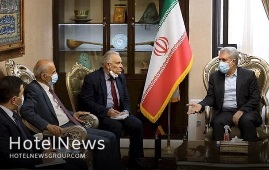
Iranian tourism minister Ali-Asghar Mounesan and Yerevan’s ambassador to Tehran Artashes Toumanian on Monday discussed ways to deepen ties in the realms of tourism and cultural heritage. The officials exchanged views on how to boost travel when the coronavirus is controlled with help of vaccines. “We are ready to increase the tourism ties between the two countries. It seems, within the next few months, the tourism sector would resume as [COVID-19] vaccination is underway worldwide,” Mounesan said. The Iranian minister attached great importance to tourism as a tool, which can foster peace and friendship between various nations. “We pay special attention to tourism with our neighbors because we believe tourism, in addition to economic matters, helps to promote friendship between the nations. Such relationship with Armenia has been improved after the [implementation of] a visa waiver [program].” The envoy, for his part, said many Armenians are not being introduced to Iran’s attractions. “The people of Armenia do not know much about Iran's tourist attractions, if [enough] information is provided and tourism officials and tour operators of the two countries work in this regard, they would be interested in traveling to Iran.” Joint work on the restoration of historical sites and monuments was another issue discussed in the Tehran meeting. “The arena of Iranian cultural heritage is important to us because it dates back to thousands of years ago,” Toumanian said. “We have good experience in the field of intangible cultural heritage and there are many similarities between the two countries in this regard. Armenian specialists can also help to restore the engravings of Iranian churches,” the ambassador explained. Talking about the coexistence of religions in Iran, Mounesan said: “In different cities of Iran, including Yazd, there are places of worship for Muslims, Jews, and Christians, which makes a nation proud. We have even managed to register several churches on the World Heritage list.” Armenian churches To the untrained eye, Iran’s earliest churches may seem modest structures to some but they bear testimony to a vast panorama of architectural and decorative scenes associated with Armenian culture blended with other regional cultures: Byzantine, Orthodox, Assyrian, Persian, and Muslim. St. Thaddeus, St. Stepanos, and the Chapel of Dzordzor are three photogenic ancient churches that constitute the Armenian Monastic Ensembles of Iran, which were collectively inscribed on the UNESCO World Heritage in 2008. They are dotted in fresh and green lands of northwest Iran and are important pilgrimage sites for Armenian-Iranians and others from across the globe. Also known as the Qareh Klise (“the Black Church”), St. Thaddeus, as one of the oldest surviving Christian monuments in the country, is situated in Chaldoran county some 20 kilometers from Maku, adjacent to the borders of Armenia, Azerbaijan, and Turkey. The Chapel of Dzordzor stands tall on the outskirts of Maku. The name narratively originates from a famous painter Hovans Yerz, known as Dzordzortzi, who supervised the chapel’s restoration for a while. The ancient Church shows off elaborate bas-reliefs of flowers, animals, and human figures on its façade and exterior walls. It bears verses of Old and New Testament in Armenian calligraphy as well.
Create: May 13, 2021 Edit: May 13, 2021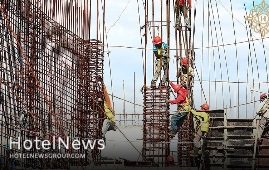
A vast tourism complex is being constructed in Pakdasht, near the Iranian capital, Pakdasht’s tourism chief has said. The project is expected to create 330 job opportunities directly, Asadollah Tajik added. The complex, which covers an area of 3,200 square meters, includes a traditional restaurant, traditional bathhouse, flower market, conference halls, museums, and accommodation units, the official explained. The project is scheduled to be completed within the next five years, he said. He also noted that establishing such complexes could boost tourism in the region. Hugging the lower slopes of the magnificent, snowcapped Alborz Mountains, Tehran is much more than a chaotic jumble of concrete and crazy traffic blanketed by a miasma of air pollution. This is the nation's dynamic beating heart and the place to get a handle on modern Iran and what its future will likely be. The metropolis has many to offer its visitors including Golestan Palace, Grand Bazaar, Treasury of National Jewels, National Museum of Iran, Glass & Ceramic Museum, Masoudieh Palace, Sarkis Cathedral, Tehran Museum of Contemporary Art, Carpet Museum of Iran, to name a few. The first time Tehran is mentioned in historical accounts is in an 11th-century chronicle in which it is described as a small village north of Ray. It became the capital city of the Seljuk Empire in the 11th century but later declined with factional strife between different neighborhoods and the Mongol invasion of 1220. Photo: File photo depicts construction workers at a building site in Tehran.
Create: May 11, 2021 Edit: May 11, 2021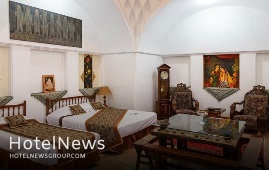
A total of 400 beds is expected to be added to the accommodation capacity of the touristic Yazd province, a local official announced on Wednesday. Ten tourism projects, which are composed of hotels and other lodging centers, are under construction across Yazd province, the official said. “Construction work has been finished on two of the projects, and the rest are complete by 70 to 90 percent.” “200 [hotel] rooms and 400 beds will be added to the accommodation capacity of Yazd when the projects come on stream,” the official said. The central province is usually referred to as a delightful place to stay, or a “don't miss” destination by almost all of its visitors. The city is home to thousands of mudbrick houses that are equipped with innovative badgirs (wind catchers), atmospheric alleyways, and many Islamic and Iranian monuments that shape its eye-catching city landscape. In July 2017, the historical structure of the capital city of Yazd was named a UNESCO World Heritage. Wedged between the northern Dasht-e Kavir and the southern Dasht-e Lut on a flat plain, the oasis city enjoys a very harmonious public-religious architecture that dates from different eras. Yazd is known today for its traditional districts, the qanat system, traditional houses, bazaars, hammams, water cisterns, mosques, synagogues, Zoroastrian temples, and the historic garden of Dolat-Abad. The city enjoys the peaceful coexistence of three religions: Islam, Judaism, and Zoroastrianism. Yazd Jameh Mosque, Dowlatabad Garden, the Yazd Atash Behram, also known as Atashkadeh-e Yazd, Towers of Silence, and adjacent desert landscape are among its tourist sites.
Create: May 8, 2021 Edit: May 8, 2021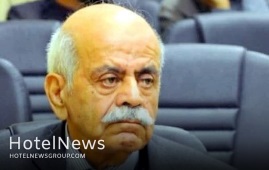
The Iranian archaeologist and architectural conservator Ahmad Kabiri Hendi, who joined plenty of archaeological explorations in his motherland, died in a Tehran hospital on Sunday. He was 76. Born in 1945 in Tehran, he studied archeology at the University of Tehran. He was employed by the national organization for the preservation of antiquities of Iran and then served in the [then] Cultural Heritage Organization as an archaeologist, site, and monument conservator. He was a member of the board of the ICOMOS of Iran and chairman of the Documents and Publications Committee. His prominent field projects include the protection and restoration of Harireh, an 8th-century city in Kish Island, the Anahita Temple at Kangavar, archaeological surveys at Shah Zand, Delazian near Semnan, Qasr Bahram Caravanserai, Persepolis, Farah Abad at Sari, etc. Furthermore, Jebrael Nokandeh, the director-general of the National Museum of Iran expressed his deep sorrow over the death of the prominent researcher and offered his condolences to his family, and the Iranian archeological community, and the ICOMOS of Iran. He added his name and valuable works will be remembered.
Create: May 6, 2021 Edit: May 6, 2021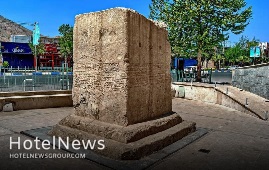
A team of cultural heritage restorers from the UNESCO-registered Persepolis has commenced work on a Seljuk-era (1037–1194) inscription, which is located in Khorramabad, the capital of Lorestan province. "The lack of adequate restoration and protection caused further erosion and destruction of this historical monument," Mehr quoted Seyyed Amin Qasemi, the provincial tourism chief, as saying on Monday. "Considering the sensitivity of the restoration of stone monuments, a specialized team of Persepolis restorers was invited to inspect the inscription and develop their proposal." The inscription has written on a large stone with a height of 3.5 meters in Kufic, which is a type of Arabic script. The Seljuk engraving is the symbol of the rich culture of people in this region. The main topic of the inscription is about cutting taxes, feeding livestock on the Shapur I pastures, and forbid some unpleasant customs. The principal purpose of carving the Seljuk inscription was the association of government with the people about informing the new rules. The place of this inscription has selected so that each caravan that was coming from the Iranian plateau could perceive the inscription. Seljuk, also spelled, Seljuq, was a ruling military family of the Oguz (Ghuzz) Turkic tribes that invaded southwestern Asia in the 11th century and eventually founded an empire that included Mesopotamia, Syria, Palestine, and most of Iran. Their advance marked the beginning of Turkish power in the Middle East. Soaked in history and culture, Lorestan is one of the lesser-known travel destinations in Iran, which mainly acts as a gateway to the sweltering plains below in adjoining Khuzestan province. Most travelers just pass through on their way to the UNESCO sites of Susa, Tchogha Zanbil, and Shushtar Historical Hydraulic System. Lorestan is also a region of raw beauty that an avid nature lover could spend weeks exploring. Lorestan was inhabited by Iranian Indo-European peoples, including the Medes, c. 1000 BC. Cimmerians and Scythians intermittently ruled the region from about 700 to 625 BC. Lorestan was incorporated into the growing Achaemenid Empire in about 540 BC and successively was part of the Seleucid, Parthian, and Sasanid dynasties.
Create: May 6, 2021 Edit: May 6, 2021